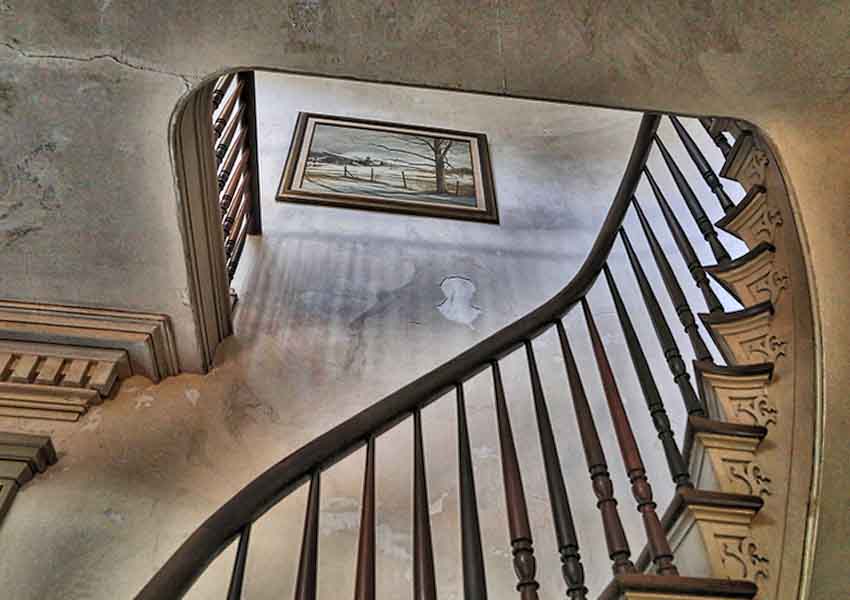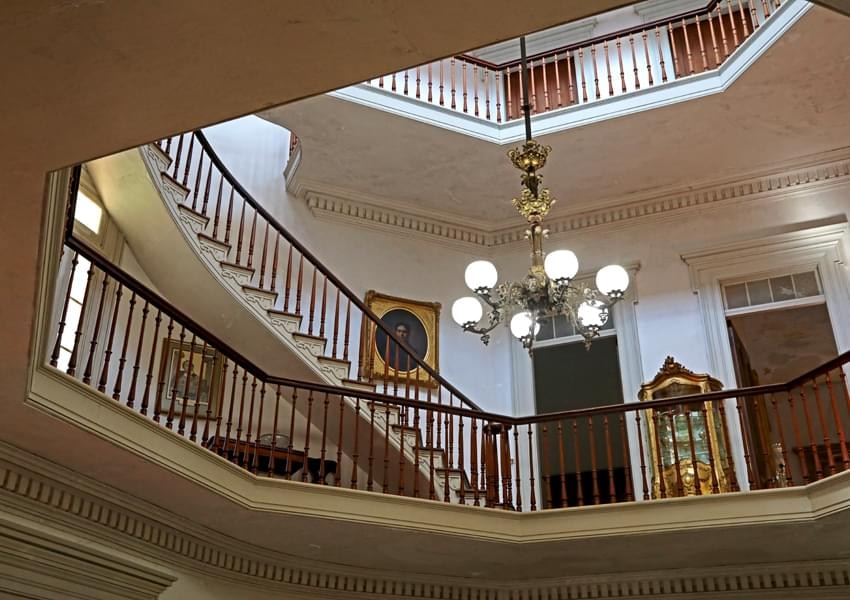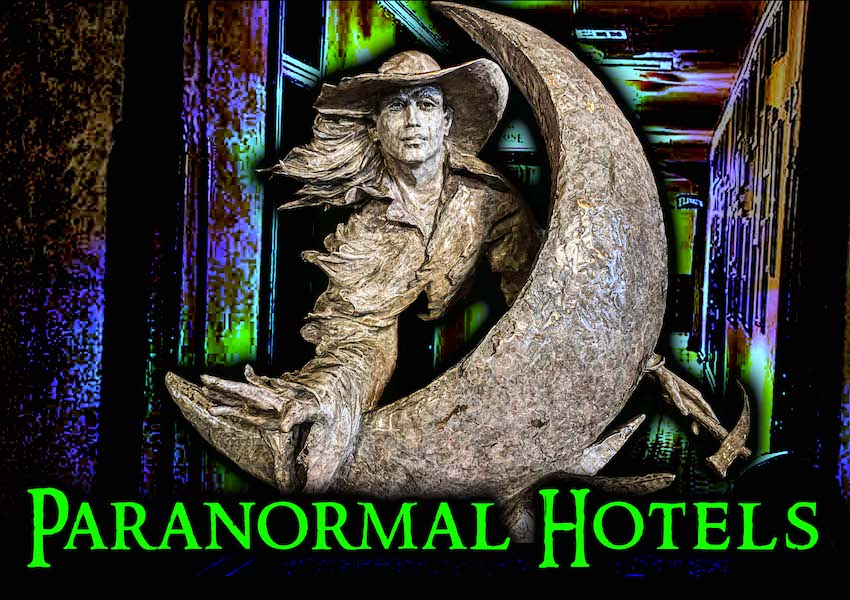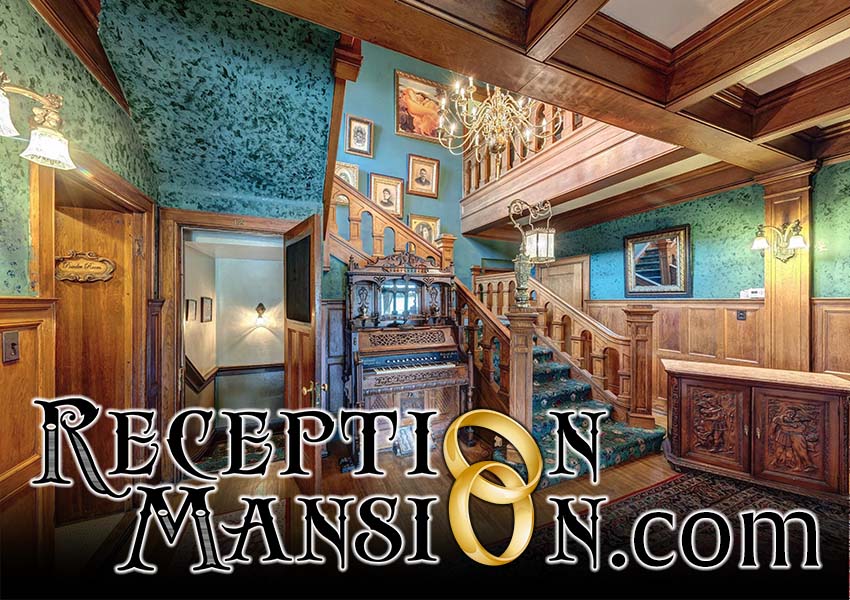West Point Mississippi
Waverley Plantation House





























Is still a favorite place to quite a few cordial spirits who love this restored mansion.
DESCRIPTION
The visitor is transfixed after entering the main brick gates, as Tom and I were when we traveled there on our summer road tour.
“Upon entering the main brick gates, a rich green path of shrubbery guides visitors to the Italian marble steps leading to the front door. It’s a stunning sight of grandeur that causes its guests to halt in their footsteps as they approach. Two giant towering white columns line the front of the mansion, and the octagonal shaped cupola rests atop the fourth floor like a crown claiming its glory as the mansion overlooks the Tombigbee River.”
Upon approaching the Waverley Plantation House, the visitor gazes on a inspiring garden, much like it looked like when the Young Family lived here. One source says that the boxwood bushes are the result from cuttings from the original boxwood bushes planted by the Young’s gardener.
 “Colonel Young’s youngest daughter, Lucy, wrote: “An especial attraction to my father’s home was the large and beautifully kept garden in front of the home. It was planned by a Landscape gardener, laid off in small beds, and winding walks, in the fashion of the time, and planted with a great variety and profusion of shrubs and flowers.”
“Colonel Young’s youngest daughter, Lucy, wrote: “An especial attraction to my father’s home was the large and beautifully kept garden in front of the home. It was planned by a Landscape gardener, laid off in small beds, and winding walks, in the fashion of the time, and planted with a great variety and profusion of shrubs and flowers.”
The 34 acres of grounds boast a 250-year-old magnolia, English and American boxwood walks, and a beautiful stocked pond.
The Waverly Plantation House is an awe-inducing, glorious four story structure that inspires the kind of love that endures; making this structure a forever home for two now three families: The Youngs, the Snows and the new owners, the Stevens.
The second family to own this special property, Donna and Robert Snow fell in love with Waverley Mansion in 1962.
Tom and I really enjoyed the tour we took while there. The tour guide was very knowledgeable about the mansion and the people who loved this place.
Being antique dealers, the Snows had fun adding some of the historic items which made this historic gem very authentic indeed. Every space has a beautiful antique of some sort; some were given back by the Young descendants, or people who had bought them from the estate in 1913. First thing that the visitors notice while standing on the front porch, is the glass around the front door it expresses a family love of the Young Family.
 “Gold, melted during production into the glass of the window resulted in a red transparent pane when backlighted, otherwise it appears black. The lyre design implied a musical leaning in the family.”
“Gold, melted during production into the glass of the window resulted in a red transparent pane when backlighted, otherwise it appears black. The lyre design implied a musical leaning in the family.”
Coming into the mansion’s foyer is a surprising experience. This historic foyer is wide open vertically; the visitor can look up and see all the way to dome of the Rotunda. The- awe-inspiring dome in the rotunda at the top of the mansion is seen all the way down. The rotunda is capped by a octagonal capula; looking very much like a crown!
The lovely double curved staircases reach each of the 4 stories. There are the circular open walkways on the other side of a spindle guard rail that exist on each of the four floors. Features such as large porticos, original mirrors, chandeliers, and its distinctive octagonal cupola. The cherry on the top in the foyer is the original sparkling chandelier that hangs from the dome of the rotunda. Wow!
 The shape of the Foyer sucked up the hot air to the very top. The windows at the top are open to let out the hot air.
The shape of the Foyer sucked up the hot air to the very top. The windows at the top are open to let out the hot air.
On the first floor, there are the common rooms normally found in mansions of the era: Library, dining room, library and the parlor. They are entered off the grand foyer.
The library has a unique, valuable piece of furniture purchased for the library by the Snows. The Libraries French Empire desk has the details on its leg “that reflects the influence following Napolean’s Egyptian campaigns at the end of the 18th Century.”
The parlor was the last room that the Snows restored in 1990. The formal parlor really showcases the Young family’s wealth and standing. Besides the structural decor, it features the 1861 hand-carved rosewood Steinway piano, one of only eight made, has an off-center keyboard, not a very popular style today. Also of note is a writing set on a desk in the parlor. There is also a wedding alcove in the parlor, where several of his kids were married.
On the first floor, Southern hospitality is still in play; as the biggest, nicest room in the Waverly Plantation House is reserved for guests; a practice started by the Young Family. The kitchen was rebuilt by the Snows outside in the same place that the Young family had their kitchen.
The foyer is wide open; the visitor can look up and see all the way to dome of the Rotunda, as well as the circular open walkways on the other side of a spindle guard rail that exist on each of the four floors. The lovely central spindled staircase winds its way in a circular path, giving access to all four floors. Each floor has a wall less floor walkway that travels around the entire floor.
 The- awe-inspiring dome in the rotunda at the top of the mansion is seen all the way down. The rotunda is capped by a cupula. The cherry on the top is the original sparkling chandelier that hangs from the dome of the rotunda. Wow!
The- awe-inspiring dome in the rotunda at the top of the mansion is seen all the way down. The rotunda is capped by a cupula. The cherry on the top is the original sparkling chandelier that hangs from the dome of the rotunda. Wow!
The four bedrooms on the second floor were/are used for the family owning this property. As Waverley Plantation House is still a family forever home “in every respect, the mansion is a working home to this day for the family members on a daily basis. Waverley Plantation House Museum is the way the family has decided to share their beautiful mansion with the public.
To the left of the house is the brick plantation office that was built around 1842, about 15 years before the mansion itself was constructed. To the right of the house can be found the new kitchen that was built by the Snows to replace the original one, in ruins by the 1920s.
HISTORY
 Col. George Young was born on December 28, 1799 into a large middle-class family of planters in Oglethorpe County, Georgia. George was the youngest of six children. It is unclear how he received the title of Colonel.
Col. George Young was born on December 28, 1799 into a large middle-class family of planters in Oglethorpe County, Georgia. George was the youngest of six children. It is unclear how he received the title of Colonel.
Young George started out his professional work life as a lawyer, after graduating with honors from the University of Georgia. At the age of 26,George married the love of his life, Lucy in 1825. Geoge began practicing law in Lexington, Georgia. He also served his community by being the Representative for the County of Oglethorpe in the Georgia Legislature. Six of the couple’s children were born in Georgia.
George Young’s first love though was being a planter; having grown up on a farm himself. When the opportunity presented itself, Young made use of this opportunity, having saved a lot from his lucrative profession
He left his law practice in Georgia and moved to Lowndes County, Mississippi about 1833 with his growing family in tow; in hope of buying up some fertile land. Sure enough, in 1835, the Pontotoc Land office put on the real estate market the newly acquired Chickasaw native American tribal lands.
“Col. George Young was able to buy thousands of acres in the prairies of present Clay and Monroe Counties, and the Waverley section of land on the prime location near the Tombigbee.”
He went to work, setting up successful plantations, using the customary slave labor and his own know-how.. Young built a plantation house at one of these plantations, near the town of West Point. His wife, Lucy Woodson Watkins Young gave birth to the last four of their children here. Her youngest, a daughter was born in 1841.
 Col. George Young also had financial interests along the river, to provide boat transportation for his crops and other businesses. He built a two- story log dogtrot cabin on the property in 1842 and moved his family there. The advantage of this location would allow him to be closer to his financial action on the river.
Col. George Young also had financial interests along the river, to provide boat transportation for his crops and other businesses. He built a two- story log dogtrot cabin on the property in 1842 and moved his family there. The advantage of this location would allow him to be closer to his financial action on the river.
In 1842, George Young also built a brick plantation office just left of the Waverley property destined to be the family forever mansion. He probably wanted to have a boatload of money saved from the profits gotten from his plantations and river busineses in order to build this showcase Mansion right.
In 1852, the year that Waveley Plantation House was built, Lucy died at the age of 52. She may have gotten to live here for a short time. At least she didn’t have to experience the deaths of two of her children in the 1860s.
This head-turning “magnificent mansion,” was indeed worth the wait for the Young family; a show-case mansion in which to continue to raise their younger children;(11- 20 yrs) in this grand place, all of which reached adulthood. The whole family was together for family events and the holidays.
The Col. George Young Plantation at Waverley property was “a self-sustaining community, complete with gardens, orchards and livestock.” During the 1840s and 1850s, “Waverley was more than Young’s base of operations. It was also a loose cluster of homes that were owned by plantation owners who farmed outlying plantations, including two of his sons; James and Thomas. Indeed,most of the plantation owners were related to the Col George Young Family.. . There were also a number of African-American slaves living in and around Waverley.”
 Col. George’s family enjoyed life in this mansion. Several of his kids were married in the parlor. Waverly was the social center of the neighborhood, and weekly dances were held in its large, spacious ballroom, probably up on the fourth floor.
Col. George’s family enjoyed life in this mansion. Several of his kids were married in the parlor. Waverly was the social center of the neighborhood, and weekly dances were held in its large, spacious ballroom, probably up on the fourth floor.
During the Civil War, Waverley House and The Young Family did its duty for the Confederate War effort. All six of the George Young’s sons went to war. One son gave his all. George’s third son, Beverly Daniel Young was in the 11th Infantry Regiment that was organized at Corinth, Mississippi, in May, 1861. Sons of Columbus joined the Confederate service at Lynchburg, Virginia.
Private Beverly Daniel Young fought bravely at First & Second Manassas Battles, Battle of Seven Pines, Cold Harbor action, Battles of Petersburg,& Gaines’ Mill and finally the brutal, three day Battle of Gettysburg, where he was seriously wounded; shot in the leg and captured.
He was sent to the David’s Island Prisoner of War Camp, that was severely overcrowded. It probably had questionable medical care. During the Civil War P.O.W.’s on both sides had no rights as prisoners. It is not surprising that Beverly Daniel Young died there from a gangrene infection on August 28th, 1863.
Beverly was buried in Cypress Hill Cemetery, Long Island, Grave No. 78 on August 29, 1863. A short while later, his body was retrieved by influential family friends and reburied in the family plot at George Hampton Young Family Cemetery.The other five sons survived the Civil War, though son Thomas died in 1869 at the age of 38 years.
 Meanwhile Col George Young and his daughters “held the fort.” The Waverley House became a hospital for recovering Confederate wounded;(probably officers) and as a sanctuary to others in need as well, including Isabella Buchanan Edmondson, a Confederate scout and spy.
Meanwhile Col George Young and his daughters “held the fort.” The Waverley House became a hospital for recovering Confederate wounded;(probably officers) and as a sanctuary to others in need as well, including Isabella Buchanan Edmondson, a Confederate scout and spy.
The most important wounded soldier was Lt. Gen. Nathan Bedford Forrest himself. He was the brave Confederate Leader who lead his troops to stop the Yankee invasion of Columbus. After suffering wounds from this conflict, Forrest was sent to recuperate at Waverley Plantation House. He became good friends with Col. George Hamilton Young in the process and was a frequent visitor.
Lt. General Forrest spent his three weeks recuperating in the Egyptian Room and began to use parts of Waverley as Confederate headquarters. The octagonal cupola of the home made a dandy observation place for watching the river and the prairie for Yankee troop movement.
During the turbulent, repressive Reconstruction years, following the Civil War, many homeless families found a place to stay at Waverly Mansion. While the result of the Civil War ended an entire culture of slavery and plantations, Col. George Young didn’t cry over spilt milk, but made use of what he still had.
After managing to pay the high tax leveled at the estate during Reconstruction, Col George Young went forward, putting people to work on his large acreage, working at his tannery, etc. In Waverley’s later history, the plantation boasted its own lumber mill, leather tannery, and a hat manufacturing.
After Col. George Young died in 1880, Waverley Mansion was passed down to Col George Young’s children. The two sons who were still bachelors, William (Captain Billy) and Val moved into Waverley Mansion.
Captain Billy had too much fun wooing the ladies to get married, and was a party animal; loving to host parties. Val loved to gamble, and sponsored card games in the Waverley, and cock fights in the front yard; not conducive to settling down with a lady.
Out of the two brothers, Captain Billy lived the longest, and stayed in Waverley Mansion until he died in 1913 at a vey ripe, old age.
After the death of Captain Billy, there was a disagreement on what to do with the family home. Some wanted to sell it, while some wanted to keep it as a family possession. Apparently no one could afford to live there, as the mansion needed a lot of care and upkeep; inside and outside. So, while the home was under the control of the family, no one moved inside; They kept up with the property taxes, but put no funds into maintaining the grounds or mansion. They locked the door and abandoned it one sad day in 1913.
During the fifty years of neglect, local young people found new purposes for this property, while nature took over gradually. It became a party place, a grand setting for the local college’s Fraternity activities as the lock on the gate was easily picked. Both the spirits of Captain Billy and Val would have approved.
 Because no effort was made by anyone to offer maintenance, the once lovely greenery became like a jungle, and lucky members of the animal kingdom enjoyed the high life inside. Vines grew up the double staircases. Bees loved having their 200 pound hive up in the Cupola.
Because no effort was made by anyone to offer maintenance, the once lovely greenery became like a jungle, and lucky members of the animal kingdom enjoyed the high life inside. Vines grew up the double staircases. Bees loved having their 200 pound hive up in the Cupola.
Besides the critters and loud parties thrown by the area’s young adults, spirits who were attached to the place stayed and perhaps threw some loud parties with ulterior motives, noticed by African Americans who lived about a mile away.
Along came Mr. and Mrs. Donna and Robert Snow who were antique dealers. They were looking for the right fixer-upper opportunity in Mississippi; willing to spend a boatload of money to make this lucky property their forever family home.
In 1962, the Snow family fell completely in love with this property and bought this extreme fixer-upper opportunity and its 35 acres.
“As we came around a huge oak tree, we stopped dead in our tracks—absolutely breathless, mesmerized. There was the house, rising up out of the jungle, four stories high with the dome set against the bluest sky. Vines clung to the house and swayed in the breeze. The porch floor had collapsed and the marble steps were scattered in the yard. We scarcely spoke.”
First thing on the agenda was to hack away at the jungle of undergrowth so repairs could be done to the sagging front porch. Taking their restoration work inside there were more challenges. The animals and beasties had to be evicted. The biggest job was removing the huge bee hive in the cupola. The Snows restored the Rotunda and cupola with seven months of work.
And so it began, Waverley Mansion was given a new life with a new family! At some point, The Waverley Mansion was suitable for humans once more and the Snow family; Donna and Robert, and their four children moved inside, and shared their beautiful forever home with the public, making it a house museum. They continued in the never-ending restoration efforts: area by area. All four of their children were married in the Parlor Alcove, like George Young’s children.
 All the hard work, sweat Equity and boatload of money invested was well worth it!
All the hard work, sweat Equity and boatload of money invested was well worth it!
Not only was this Waverley Mansion put on the 1978 NRHP, it was recognized as a Mississippi historical landmark, which is quite a high honor. The final restoration project that Donna saw was the Parlor done in 1990! She died in 1991.
However, when the time came to decide what to do with Waverley Mansion, the Snow children did a better job than the Young children. When Robert Snow was slowly dying of a disease, in 2016, the family knew they had to find someone that could carry on maintaining and restoring Waverley Manson. The children were in their 60s and didn’t have the means to live there or the energy needed to do so. It was a painful decision.
While the 8,000 sq ft mansion with 34 acres was deemed to be worth $2, 975,000 dollars, the family sold Waverley Mansion for $1,200,000 to new owners who not only had the funds to maintain it, but looked with great enthusiasm and energy at the house as a treasure that needed to available to the public, and had a dream to restore many of the buildings that once stood on the property.
 The Stevens also plan to build a smaller home next door to Waverley Mansion to live in, leaving the Waverley Mansion to be strictly a House Museum.
The Stevens also plan to build a smaller home next door to Waverley Mansion to live in, leaving the Waverley Mansion to be strictly a House Museum.
The furniture and family antiques were included in the price. The bonus of getting this property at a lower price than what it was assessed also insured that the new owners had up front money to continue to develop the property.
The spirits who loved Waverley Mansion while alive must have been thrilled!
HISTORY OF MANIFESTATIONS
 Children and senior citizens have long been vulnerable to deadly illnesses and accidents.
Children and senior citizens have long been vulnerable to deadly illnesses and accidents.
Sometime during the Civil War years, a young female child died at Waverly Plantation Housedue to a fatal case of Diphtheria.
In 1874, young Susan Hamilton, probably related to the Young Family in some way had a tragic accident on the central staircase. There are two stories on how she died.
She got her head caught in the spindles and broke her neck. The problem with this story is that the spindles are too close together for a young child to actually stick her head between them. She fell down the steep, dangerous for young children stairs, and broke her neck that way. I think this is the most likely scenario.
 Children who die sometimes stick around a place they liked and/ or yearn to find their mother. The spirit of Little Susan and or the first little girl who died here have made their presences known. Spirit people who loved their forever home or favorite place in this world while alive, sometimes like to visit or stay. A variety of spirits still love this mansion.
Children who die sometimes stick around a place they liked and/ or yearn to find their mother. The spirit of Little Susan and or the first little girl who died here have made their presences known. Spirit people who loved their forever home or favorite place in this world while alive, sometimes like to visit or stay. A variety of spirits still love this mansion.
Sometimes the spirits of soldiers killed in battle will go home to their favorite place in this world. The spirit of Beverly Young may be the soldier seen at the mansion. As Columbus was a hospital town for the Confederacy, the wounded were sent and sometimes treated in the town’s homes and Inns to try to recover, this happened throughout the Southern states. Waverley Plantation House operated as a hospital for the wounded; probably for officers. Sometimes deceased solders like to visit the place where they stayed as a wounded soldier but wasn’t in the shape needed to enjoy the surroundings. This Spirit of a Confederate soldier could be such a wounded soldier who died here.
 When a property is neglected or something needs attention, spirits can try anything to get the attention of the living. Spirits who loved this place couldn’t of been too happy at the living who had failed to take care of this mansion. Col. George Young or another family member may have been the unhappy spirit trying to get the attention of the living to fix his former forever home. Structures that have been reconstructed on where they originally stood may in the furtre, draw back interested spirits who once live and worked there.
When a property is neglected or something needs attention, spirits can try anything to get the attention of the living. Spirits who loved this place couldn’t of been too happy at the living who had failed to take care of this mansion. Col. George Young or another family member may have been the unhappy spirit trying to get the attention of the living to fix his former forever home. Structures that have been reconstructed on where they originally stood may in the furtre, draw back interested spirits who once live and worked there.
The Stevens, new owners of The Waverley Mansion have plans to rebuild the structures that Mr. Young had established. It is possible that people who had connections to these structures may come back and visit!
MANIFESTATIONS
Spirits have tried to get the attention of the living…
To try to get their mansion fixed during the fifty years of abandonment.
When the mansion was neglected, neighbors could hear loud 1800s music coming from the mansion. Some think the music is residual. Some think the music was caused by spirits trying to get the attention of the living; the dolts that had not appreciated it.
Enormously loud crashes have been heard in the house yet nothing found disturbed.
Doors heard slamming shut but none found closed.
Spirits of Two Young Girls
Spirit of Sarah Hamilton
Described as being 4 years old, with dark blond hair. She wears a white, high neck gown. It was surmised that it was her that was often plainly seen playing on the double staircases.
Mrs. Snow noticed an imprint of a child sleeping on one of the beds upstairs. One night, both the Snows stayed up and watched the bed. sure enough, a little unseen presence climbed up the side of the bed and lay down on the bed.After an our or two , this unseen presence got up and slipped down the side of the bed. Mrs Snow would hear a little voice behind her saying, “Mama?’
One day when she heard this plaintive, sad little voice, she turned around and squatted down and asked the ghost child in a kind manner, “Can I help you? What is the matter?”
Spirit of little girl who died from Dyptheria
She may be the spirit seen playing on the stairs.
Spirit of George Young
Likes to appear in the mansions mirrors in front of the living.
Spirit of the Confederate Soldier
Most probably the spirit of Beverly Young; Like father, like son!
This playful spirit gets his chuckles by appearing behind a living person who is looking in one of the full length mirrors. Spirits of soldiers often like to tease the living.
STILL HAUNTED?
 Most Probably So! Now that the structure has been fully restored, spirits who loved the place may want to visit and enjoy the beauty of their forever house.
Most Probably So! Now that the structure has been fully restored, spirits who loved the place may want to visit and enjoy the beauty of their forever house.
The spirits here have made themselves clearly known The spirit of Sarah Hamilton has been quiet since Mrs Snow spoke kindly to her. She may have realized that Mrs. Snow was not her mother, but found instead some peace and gone to the light, or could still come as a visitor; no longer stuck there in emotional pain.
The other spirit child may still be there, playing on the stairs as a little girl has been seen by witnesses. It is felt that members of the Young family are in visitation, and I bet George Young himself keeps an eye on his forever home.
L. Sydney Fisher, bestselling author and paranormal researcher caught some interesting evidence during her visits to Waverley House. She theorizes that more spirits are there but are benign and want to tell their stories to a medium willing to listen. The Snows had a lot of personal experiences with their spirits. Visitors to this House Museum have seen the spirit that like to show themselves. The neighbors of Waverley Mansion have long been aware of the spirits in the Waverley Mansion. I couldn’t find much hard evidence caught by investigators or visitors to Waverley Mansion. I did read though that a private investigation did catch a few EVPS.
LOCATION
Waverley Plantation House Museum
1852 Waverley Mansion Rd,
West Point, MS 39773
Waverley is located roughly midway between West Point and Columbus, on the northeast side of Waverley Road south of Mississippi Highway 50.

SOURCES INCLUDE
- lowndes.msghn.org
- findagrave.com
- newsouthernview.com
- medium.com, L. Sydney Fisher
- onlyinyourstate.com/mississippi
- cdispatch.com
- theoldhouselife.com
- Images for waverly mansion mississippi & More images for waverly mansion mississippi
- visitcolumbusms.org
- facebook.com/groups/FriendsOfWaverley
- theoldhouselife.com
- For sale as of dailytimesleader.com September 14, 2017
Our Haunted Paranormal Stories are Written by Julie Carr
Our Photos are copyrighted by Tom Carr
Visit the memorable… Milwaukee Haunted Hotel












































































































































